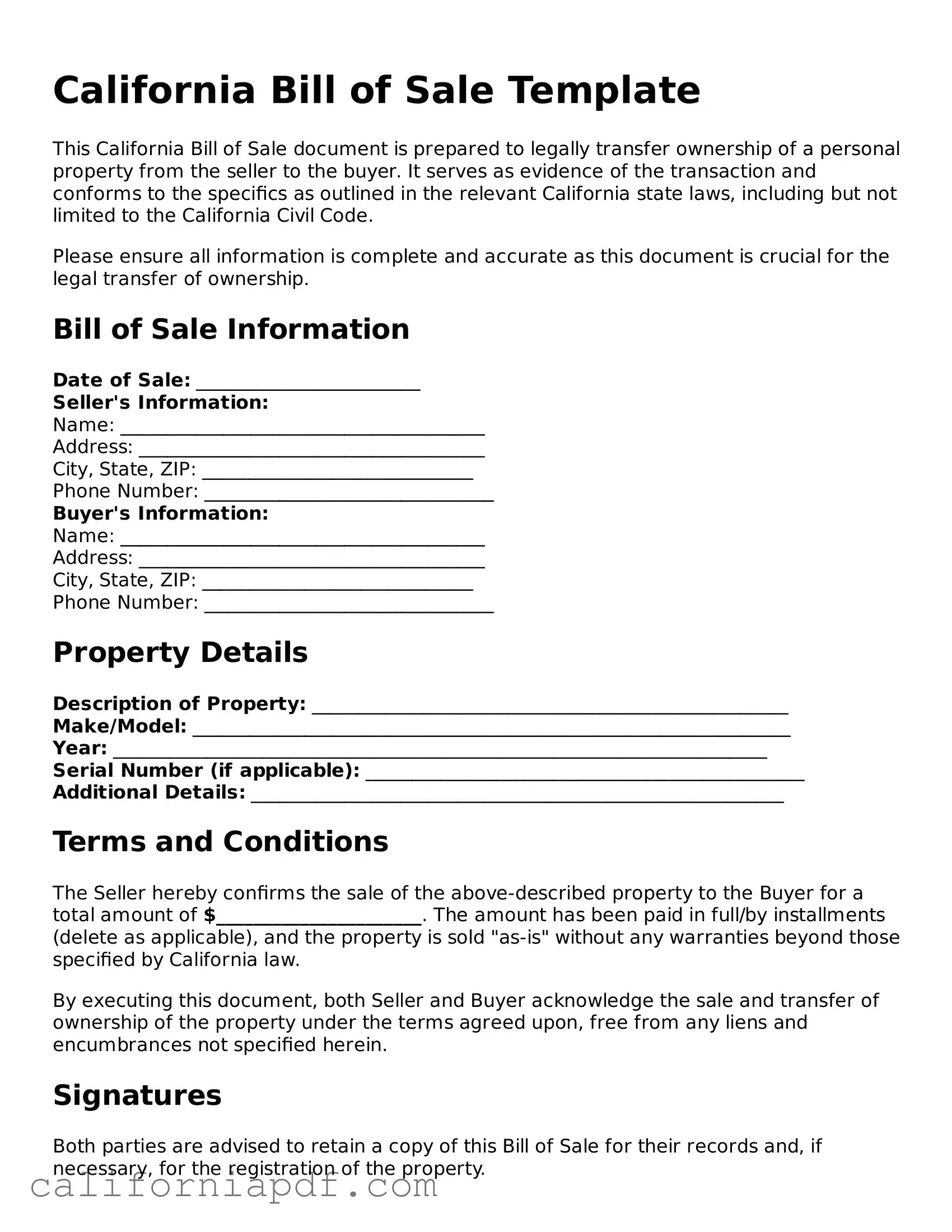California Bill of Sale Template
This California Bill of Sale document is prepared to legally transfer ownership of a personal property from the seller to the buyer. It serves as evidence of the transaction and conforms to the specifics as outlined in the relevant California state laws, including but not limited to the California Civil Code.
Please ensure all information is complete and accurate as this document is crucial for the legal transfer of ownership.
Bill of Sale Information
Date of Sale: ________________________
Seller's Information:
Name: _______________________________________
Address: _____________________________________
City, State, ZIP: _____________________________
Phone Number: _______________________________
Buyer's Information:
Name: _______________________________________
Address: _____________________________________
City, State, ZIP: _____________________________
Phone Number: _______________________________
Property Details
Description of Property: ___________________________________________________
Make/Model: ________________________________________________________________
Year: ______________________________________________________________________
Serial Number (if applicable): _______________________________________________
Additional Details: _________________________________________________________
Terms and Conditions
The Seller hereby confirms the sale of the above-described property to the Buyer for a total amount of $______________________. The amount has been paid in full/by installments (delete as applicable), and the property is sold "as-is" without any warranties beyond those specified by California law.
By executing this document, both Seller and Buyer acknowledge the sale and transfer of ownership of the property under the terms agreed upon, free from any liens and encumbrances not specified herein.
Signatures
Both parties are advised to retain a copy of this Bill of Sale for their records and, if necessary, for the registration of the property.
Seller's Signature: ______________________________ Date: _______________
Buyer's Signature: ________________________________ Date: _______________
Witness (if applicable)
Name: ______________________________________
Signature: ________________________________ Date: _______________
